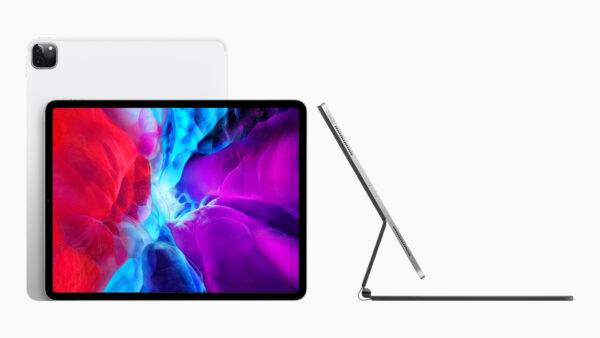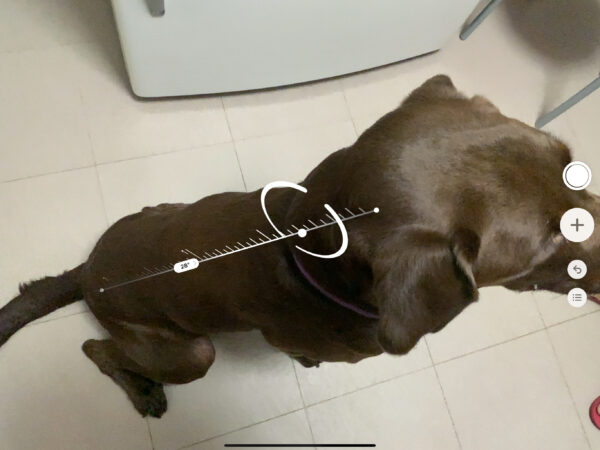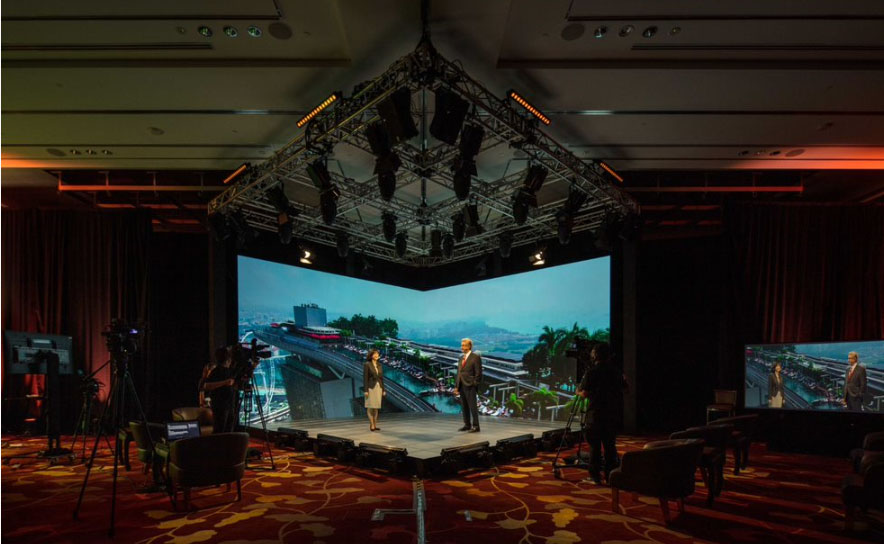
I started out using the new iPad Pro 2020 recently with a question in mind: Can Apple’s latest tablet be the only device I use for work and leisure?
Covid-19 has made the question tough to answer. Absent of real-life meetings and press conferences, travel and transit hours at airports and chilling out at cafes, I could not really test this new tablet outside of home or for work purposes.
Thinking of that brings my mind back a decade ago in January 2010, when I was at the Yuena Buena Centre for the Arts in San Francisco to see Steve Jobs unveil the first iPad.
For most of the launch, Jobs was comfortably reclined on a sofa, demonstrating the key features of the new tablet. This tableau highlighted the casual relationship users would have with the tablet, a feeling that has endured till today.
The key thing that struck me at the 2010 launch event was the iPad’s 10-hour battery life, which was a huge selling point contributing to its popularity. By late 2018, Apple had sold over 400 million of them. Altogether, there have been four generations of the iPad Pro.
iPad Pro 2020
Apple announced the latest 11- and 12.9-inch iPad Pro in March this year, adding a more powerful processor, new cameras, Lidar scanner and support for mouse and a new keyboard including a built-in trackpad.
With the upcoming iOS 14 release expected soon, there will be new features that will greatly enhance the usability of the tablet.
The loaner unit I received from Apple is a 12.9-inch model with 1TB of storage and cellular capabilities. It costs a princely S$2,469. Add the Apple Pencil (S$189) and the Magic Keyboard (S$519), and you will be S$3,177 out of pocket.
This year’s tablet iteration has flat edges on the sides and rounded corners with glass at the front. The rest of the chassis is aluminium.
It is incredibly slim (5.9mm) and light (643g). Powered by the A12Z Bionic chip, it is powerful and speedy. It is Wi-Fi 6-enabled which improves wireless connectivity when there are multiple devices hooked up to the network in a room.
This is really a significant development for today’s work-from-home situation where the number of wireless devices in a household has multiplied.
A key feature Apple added is the Lidar scanner, a light detection and ranging scanner. In recent years, Apple has been pushing its augmented reality (AR) strategy, so expect Apple and its partners to unveil AR apps in the near future.
Lidar combined with motion sensors, camera data and the A16Z Bionic chip neural engine can provide precise measurements of surrounding objects and quickly track peoples’ movements.

Currently, I don’t see how I am going to use the Lidar scanner as apps are few. As Digital Trends’ review said:
The lidar sensor isn’t much help at the moment. There is no obvious benefit when using the main camera, and Apple doesn’t go into much detail about what you should use it for, outside of the Measure app. This lets you quickly measure items in the real world using the camera on the iPad. It’s fast to recognize basic shapes and items, and I love the way you can see more detailed measurement data the closer you move the camera. However, I’m not sure how often I’d use it.
https://www.digitaltrends.com/tablet-reviews/apple-ipad-pro-2020-review/Using the Measure feature, I found out the length of Nemo, my Chocolate Labrador Retriever. He would never stay still long enough for me to take a photo.
Incentivised with some kibbles, he sat still for a few seconds, long enough for the iPad to scan it from neck nose to its buttocks: he was 28 inches long seated. Apart from that, I don’t know what other use there is for the Lidar scanner.
Performance-wise, the iPad Pro 2020 is fast. The A12Z Bionic chip is a step up from the last-generation A12 Bionic chip and it shows. The well-known site Tomsguide.com described the tablet as providing real-world fast performance:
You should expect fast real-world performance as well. The iPad Pro took only 34 seconds to export a 4K video to 1080p after applying a color filter and transition in the Adobe Rush app. The iPhone 11 Pro needed 46 seconds to complete the same task.
The iPad Pro does deliver more graphics muscle via the A12Z Bionic. On the BaseMark GPU test, the new iPad Pro scored 21,009, compared to 19,588 for the previous version.
Tomsguide.comApple also announced a couple months after the iPad Pro 2020 launch a new accessory keyboard. The cantilevered design with adjustable viewing angles, a USB-C port, and a trackpad, is one of the most beautiful designs ever to come from Apple.
Ease of use
The best features of the new tablet has to do with the latest iPadOS which now provides navigation with trackpad, mouse and cursor. I don’t have to touch the screen to move around it.
With the Magic Keyboard, my fingers do not leave the keyboard, instead I navigate using the trackpad to guide the cursor around. The cursor appears as a bubble on the home screen and as a vertical line when scrolling through text.
The gestures that work on the screen also work on the trackpad: swiping up with three fingers shows all of the open apps, swiping sideways using two fingers lets you pan across.
Mouse support is also available, a handy aid making the tablet easier to use when the keyboard is attached.
Any review of this tablet is incomplete without including the Magic Keyboard. It is an optional accessory but I feel it completes the iPad Pro by giving it more office-like features such as keyboard and mouse.
The Magic Keyboard attaches magnetically to the iPad Pro and has a scissor mechanism that allows the multi-touch screen to “float” above the keyboard. The cantilevered mechanism enables the viewer to adjust the viewing angle up to 130 degrees.
The viewing angles are good especially when I am lying on the couch or bed. Previously, I had to use a pillow or cushion to prop up the tablet even if it has a stand because the angle is fixed. Now that there is a range of angles, so I can adjust it to suit my sitting or lying position.
As a writer, I spend six to eight hours every day typing on the keyboard. I don’t like typing on the virtual keyboard because typing on glass feels unnatural.
With the real keyboard, each key offers “give” which is more comfortable for this typing. The other benefit is that the keyboard is backlit, very good for darkened bedrooms and – when rules governing face-to-face events are relaxed – dimmed conference halls.
A USB-C port for charging is located on the left-hand side of the hinge, a very handy feature because it frees up the port on the iPad for other USB-C accessories like external drives and SD cards.
With the Magic Keyboard, the default viewing mode is horizontal. This is a bummer. Some e-magazines like Wired and Vanity Fair appear as vertical pages.
The Magic Keyboard does not fold back, so to read these magazines, I have to remove the iPad Pro from the Keyboard cover or turn it sideways to read “vertical”.
Another downer is that to use the Pencil without straining my wrist, I have to remove the tablet from the Keyboard and either hold it the crook of my elbow or lay it flat on the table.
To write when the tablet is still attached means the wrist is cocked holding the Pencil up, resulting in wrist strain which was what I experienced.
This Magic Keyboard doubles up as a cover of sorts for the tablet. It does protect the front and back but not the edges.
If I tried a drop test, it might jar the magnetic connection or the electronic components on the tablet and keyboard! If it falls on the side, it might just cause a dent. No, I dared not try the drop test.
As an alternative, I got myself the Logitech’s Slim Folio Pro Case with integrated Bluetooth keyboard (S$189). It has a nice grip and offers front and back protection as well as around the edges where it protects against bumps into tables, cupboards, walls and other objects.
The Logitech keyboard is also backlit and has a good feel. However, it has to be manually paired with the iPad Pro before the keyboard and tablet are in sync.
Writing with the Pencil is a cinch. The keyboard can be folded back, stabilising the tablet on the table or to be held firmly for writing on my lap or reading. However, it does not have the cantilevered design which means that the viewing angle is fixed.
The Apple Pencil lets you write and doodle. But the feature I have been waiting for is the ability to convert handwriting notes to text.
Scribble is a feature that does just that. It was announced at WWDC in June and would be available once iOS 14 is released which will be in the next couple of months.
I did test Scribble by downloading a beta version of iOS14 (hopefully the tablet will not crash). With Scribble, I can make annotations on a presentation slide or a document and it will be automatically converted into text.
Bottomline
As a communication tool, the iPad Pro is handy. The global pandemic has popularised video conferencing tools such as Zoom, Webex, Skype, Microsoft Teams and Blue Jeans. These can all be used on the iPad Pro.
For work, creating spreadsheets and presentation decks and writing can be easily done on the tablet using productivity tools from Apple, G Suite or Office 365 . The work can be easily saved and archived in G Cloud, iCloud, Dropbox, Onedrive and/or Evernote.
For creative professionals, the camera plus the video and audio editing capabilities of the iPad is more than sufficient. I had little opportunity to test the video and audio editing. You might want to read Slashgear Vincent Nguyen’s report of video and audio editing here.
Compared to my previous 10.5-inch 7th generation iPad, this tablet is streaks ahead in features, performance and usage. On its own, it weighs just over 600g but the weight hikes up to nearly 1.1kg with the Magic Keyboard.
This is slightly lighter than my MacBook Air which weighs in at 1.27kg. Admittedly, the iPad Pro with all its accessories is heavy to carry around.
But in the current situation where everyone is sheltered at home and not going out much, it will be mostly used at home, so the weight is not a problem.
I continue to use the Magic Keyboard because I prefer the feel of the keyboard. Besides, it offers different viewing angles which suits me well because I use the iPad extensively for reading.
But each time I read Vanity Fair and Wired, I would have to remove the iPad from the Keyboard. It’s a small price to pay for having different viewing angels.
My concern is whether the magnets holding the iPad up like a magic trick can stay strong or sag? Will dust and particles get into the scissor keyboard and gum it up? Time will tell.
I like the way the Pencil is magnetically attached to the top of the iPad. Very elegant solution to keep Pencil juiced up and cradled to the tablet.
But I do not trust it will sit there firmly if I am walking to the train station, even in less crowded sidewalks and cafes because the walking motion may just shift it from its perch?
What I would like is to see a longer power cable. Currently at only 1 metre, it means I have to sit really close to the power outlet.
With WFH arrangements, family members are now huddled over the dining table and sharing the power outlets near it. For more elbow room, I would have to use an extension cord to plug in from a moderate distance.
So, is the new iPad worth buying? For users whose iPad is three years older or more, or who draw, paint and like to write, the iPad Pro 2020 is a good upgrade.
If you are still mostly sheltered at home, consider the 11-inch Wi-Fi model with 128GB storage, which has the same bells and whistles as others in the lineup and a lower price of S$1,199.
For me, the Macbook Air is still the go-to machine for writing but the iPad Pro 2020 comes closest to replacing it. Until Covid-19 social interaction rules are relaxed, I’d reserve my decision on putting the laptop aside in favour of the tablet.
Certainly, it is now my constant companion at home for taking notes during Zoom meetings, Houseparty calls with friends, reading and watching Netflix.





